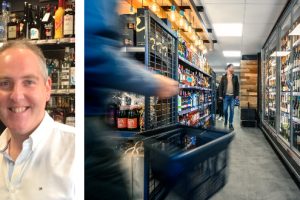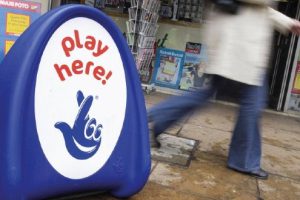For 28 stores and counting, up and down the UK, these are actually franchised outlets, run by independent retailers or student bodies on behalf of the Manchester-based retailer.
The franchise model is a relatively new departure for the 177-year-old group, which first trialled the concept in early 2017 in conjunction with forecourt operator MRH, before the petrol retailer was snapped up by rival MFG.
Given new impetus by the Co-op’s takeover of Nisa in late 2017 and its subsequent deal to supply Costcutter, the franchise operation has now grown to 28 sites, including four with former Nisa retailers, four ex-Costcutter company-owned stores, 10 forecourts and six university outlets.
Having recently gone through a period of rapid growth, with 14 stores joining in the past seven months, the franchise operation is on target to reach 40 outlets by the end of the year and aims to add a further 40 in 2022.
New channels
For Martin Rogers, who has been with the Co-op for 15 years and is now in charge of “new channels”, it’s a proposition that has clearly got legs. “We’re nationwide now,” he says. “From Stirling to Somerset, Leeds to London, Kent to Cornwall. We’re not in Wales yet, but that’s on my list of objectives.
“We’ve got stores in every mission and store type – from campus stores to urban convenience, forecourts to rural supermarkets.”
A prime example of the latter is the Co-op in Somerton, Somerset, about 10 miles from Glastonbury, which opened in October 2019 as the first franchise store with a Nisa partner, in this case Richard Williams, whose family has run the shop for 25 years.
It was rejuvenated and rebranded following a £600,000 refurbishment and now features an in-store bakery, hot food and a wide range of fresh and locally sourced products.
The 10 forecourt sites are run by petrol retailer SGN, while the first purpose-built Co-op service station opened in March this year on the A30 near Bodmin in Cornwall.
The 2,000sq ft outlet is owned by franchisee Mark Upton, features the launch of the freshly brewed Ever Ground coffee concept, and has been named by industry think-tank the IGD as one of its “stores to watch” in 2021.
Great potential also appears to come from university campus stores and Rogers cites the exclusive franchise deal with the National Union of Students struck in September 2019 as one of the key milestones in developing the franchise proposition.
New stores are set to open at Keele University in September and Aberdeen later in the year and Rogers says momentum is building as the Co-op is able to show other universities successful examples of franchise outlets operating elsewhere. “It’s great when you get advocacy,” he says.
Moment of truth
Access to the student consumer can also help in introducing youngsters to the Co-op brand. “It gives us a great opportunity to engage with that demographic,” says Rogers, who believes the company’s stance on ethics, health and sustainability resonates well with this market.
“It’s a moment of truth, a key point in their lives, when they are making their own meals for the first time and it’s hopefully creating life-long habits.”
This synergy can be seen in sales of the Co-op’s own-brand vegan range, GRO, where university stores are said to make up three out of the four top-performing sites across the Co-op estate.
The unique selling point of Co-op compared with other franchise propositions within the convenience sector is that it is franchising out the masterbrand, not a watered-down version, says Rogers.
The drawback of this approach is that a third party cannot always be trusted to uphold brand standards, but Rogers says this has not proved to be a problem so far. “It was the area we were most worried about,” he admits. “But we have put a great deal of effort into articulating our brand standards and vetting our partners.
“What we have learned is that independents actually cherish the brand, because they see it as a differentiator that gets customers to choose their shop. In fact, brand standards are very high, as we see in our quarterly audits. Independents view it as the USP of their stores, so they are very protective.”
He adds: “Working with independent retailers is refreshing because they genuinely want to create the best store in the best location. We have learned a huge amount.
“Putting the independent retailing lens on what we do has been very enjoyable and it has enabled us to get the Co-op to places we wouldn’t be without the franchise model.”
Vetting process
The smooth relationship with independents is thanks in no small part to a rigorous selection process by the Co-op when it comes to franchisees, with many more applicants being rejected than taken on.
“The most important thing is they share our values and principles and they are committed to creating a great Co-op proposition for their customers,” says Rogers.
“We look for progressive partners who want to support the local community and understand the importance of high standards in their stores. We’re learning all the time and continuing to develop how we work with independent retailers.”
He accepts the model will not suit all independents, but says it can be attractive to those who have reached a stage in their lives where they want to “step back from the coal face” and from tasks such as taking in the papers at 6am.
“These are the sorts of people – maybe they have got other outside interests as well – who maybe want more structure and would like the consistency of an automated operating model.”
It also helps, Rogers says, that many of these entrepreneurs are already familiar with the franchise model through operating other kinds of concession, such as a Subway.
Although the Covid-19 pandemic did cause some slowdown in the expansion of Co-op Franchise – particularly in the higher education sector – the pace is now starting to pick up once again.
The group aims to add at least 25 franchised stores next year, possibly as many as 40, and expects to hit triple figures within the next two to three years, provided the right opportunities arise.
The model can be adapted to suit premises from 1,500sq ft to 6,500sq ft in size, with location being the most important factor, alongside the right partners.
“Want great stores in great locations that protect the brand,” says Rogers. “It’s about incremental growth to get us into places where we couldn’t buy or rent or operate that space ourselves. Because we’re nationwide now and we have got presence in all these different routes to market, we are at an inflection point and really ready to scale up.”
 Talking Retail Grocery and product news for independent retailers
Talking Retail Grocery and product news for independent retailers






